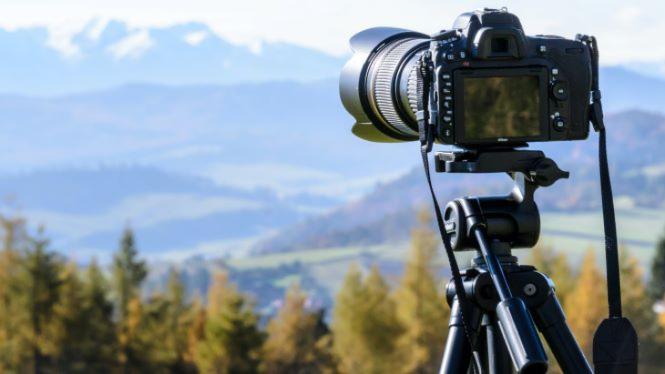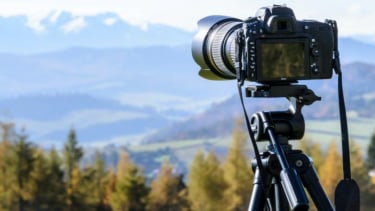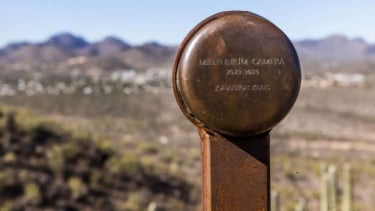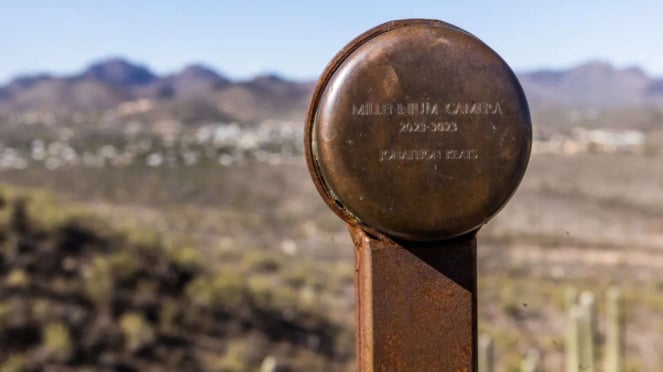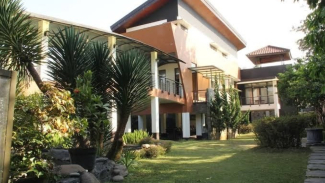This Advanced Camera to Take a 1,000-year long Exposure Photo
- VIVA.co.id/Arianti Widya
Jakarta – A University of Arizona professor is hoping to capture the changes of a Tucson landscape over the next thousand years, setting up a primitive pinhole camera for a super-long exposure that will be ready to be viewed in 3023.
Jonathon Keats, 52, has mounted his Millennium Camera on a steel pole overlooking a desert area that is the site of new housing development in the foreground of a mountain range.
The research associate at the university’s school of fine arts says he hopes his photography project will double as a “philosophical instrument” that will make people consider humanity’s profound impact on our environment over the next millennia.
“Whatever happens over that time span is recorded in an image that will be visible ideally to those in the future,” Keats said, adding that he hoped the project would also encourage present-day consideration of “hyper urbanization.”
Kamera 1.000 tahun di Arizona
- New York Post
“It is equally directed at us in the present and through time because we might be motivated to change the picture to make it one that we want them to see.”
The long-exposure pinhole camera was known about as early as 500 BC, according to researchers.
Keats went back to basics and used the archaic technology for his project because, “nobody’s going to remember to change the batteries after 300 years if you have a digital camera (and) in 1,000 years people might not know how to develop a physical photograph.”
The low tech camera focuses sunlight through a pinhole and projects it onto film at the back of the camera, where imprints of the landscape will be slowly made over time.
Keats used a renaissance oil painting technique for his canvas: a pigment called red madder was painted onto copper that had been rubbed with pumice and garlic to create a photo sensitive surface that will “fade very gradually.”
The pinhole was pierced through 24 carat gold, which will “not corrode,” according to the professor.
“The resulting image should be a time capsule and also a portal through time that requires interpretations,” he remarked.
For example, a thousand-year exposure of Manhattan, started in 1024 and viewed today, would only faintly display its most famous skyscrapers, which have only been around for a century or so.
If a major urban development sprouted up in 500 years, “you would see the ghosts of those skyscrapers but they wouldn’t be as opaque an image as the mountains that had been there” for the entire duration of the photo shoot,” Keats explained.
“Or if all the buildings currently there would be removed, you’d see them as ghosts,” he said, adding that “gradual movement would be a blur, like sports photography.”
Of course anything could happen in 1,000 years. Humans might go extinct. The area could be leveled by an asteroid or a natural disaster. Alien invaders might make Tucson their Earth capitol.
At the very least, the plaque marking the project would need to be replaced multiple times over the centuries.
Keats is also working on installing other thousand-year cameras in Los Angeles, the Austrian Alps and Chongqing, China
“So many things could go wrong and I think that regardless of what happens, it is an image of the world and how the world changes,” said the innovator, as reported from New York Post site.
